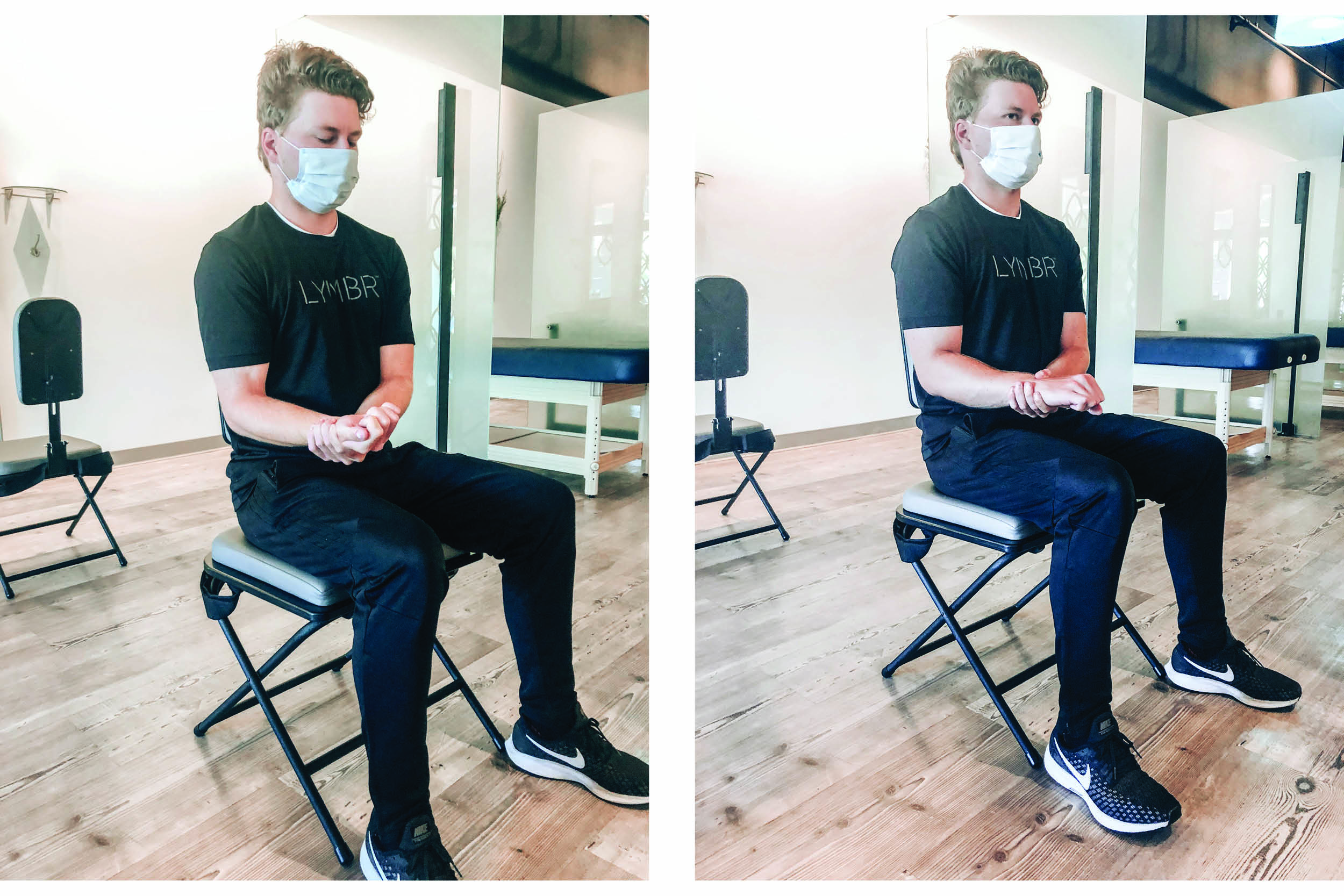There aren’t too many racquet sport athletes that don’t know about tennis elbow (particularly if you are reading this), but let’s take this opportunity to learn exactly what it is. Tennis elbow is simply an overuse injury that occurs when too many repetitive movements of the elbow and wrist are performed. Tennis players are not the only people that are susceptible to this injury, however it is most common in racquet sport athletes due to the strain that it puts on the lateral aspect of the elbow. The medical term for tennis elbow is lateral epicondylitis. When tennis elbow occurs, the inflammation causing pain is localized to the tendon on the outside of the elbow (the lateral epicondyle). Tendons are responsible for attaching muscle to bone and are susceptible to overuse injuries, one of the most common forms of inflammation found in tennis players is of the lateral epicondylitis in the elbow, otherwise known as tennis elbow. There are many ways to treat tennis elbow if you wind up with it, yet it is important to be proactive and take the proper steps to help prevent this from happening.
If you are a racquet sport athlete, we can modify our sessions in order to keep you at your best based on what your individual goals are. If tennis elbow is something that you are conscious about preventing, let us know and we can add our wrist and forearm stretching protocols into our sessions. Below are some stretches that you can do on your own before and after you play. It is important to target as many aspects of the lower arm as possible. Since the muscles and tendons are all very close together, just doing one stretch will not give the desired result. The fingers play a big part in a tennis swing as they are the body part that actually grips the racquet. Since we grip the racquet so hard, they are constantly in a flexed position, therefore adding these simple finger extension movements will greatly aid your tennis game.
WRIST EXTENSORS
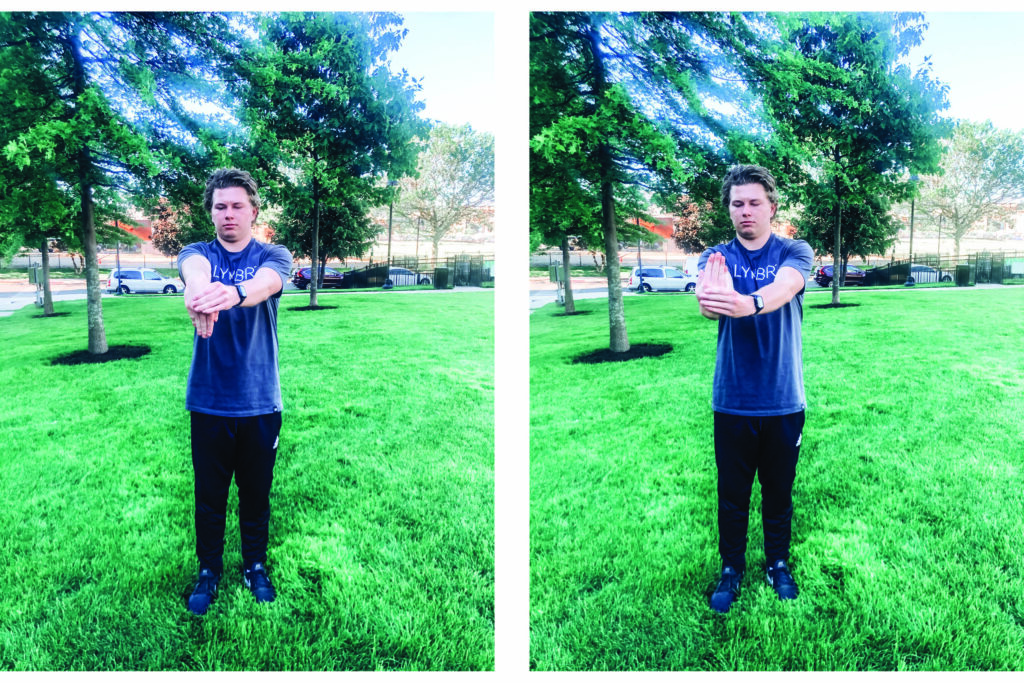
Wrist extensors pronated (left image) – While standing, extend one arm out in front of you at a 90-degree angle with your palm pointing down and your elbow crease angled toward your body. With your fingers out straight, gently point them down to the floor along with your wrist and use your opposite hand to assist. Make sure the pressure of your assisting hand is closer to your wrist than your fingers as it will be less sensitive and target the forearm muscles more specifically. Move through the stretch for 2-3 seconds and relax. Do 3-5 reps on one side and repeat on the other side. Perform 1-3 sets on each side. Note: This stretch will target the belly of the forearm extensor muscles.
Wrist extensors supinated (right image) – While standing, extend one arm out in front of you at a 90-degree angle with your palm pointing up and your elbow crease angled straight up. With your fingers out straight, gently point them up to the ceiling with your wrist and use your opposite hand to assist. Make sure the pressure of your assisting hand is closer to your wrist than your fingers as it will be less sensitive and target the forearm muscles more specifically. Move through the stretch for 2-3 seconds and relax. Do 3-5 reps on one side and repeat on the other side. Perform 1-3 sets on each side. Note: This stretch will target the distal forearm extensor muscles.
WRIST FLEXORS
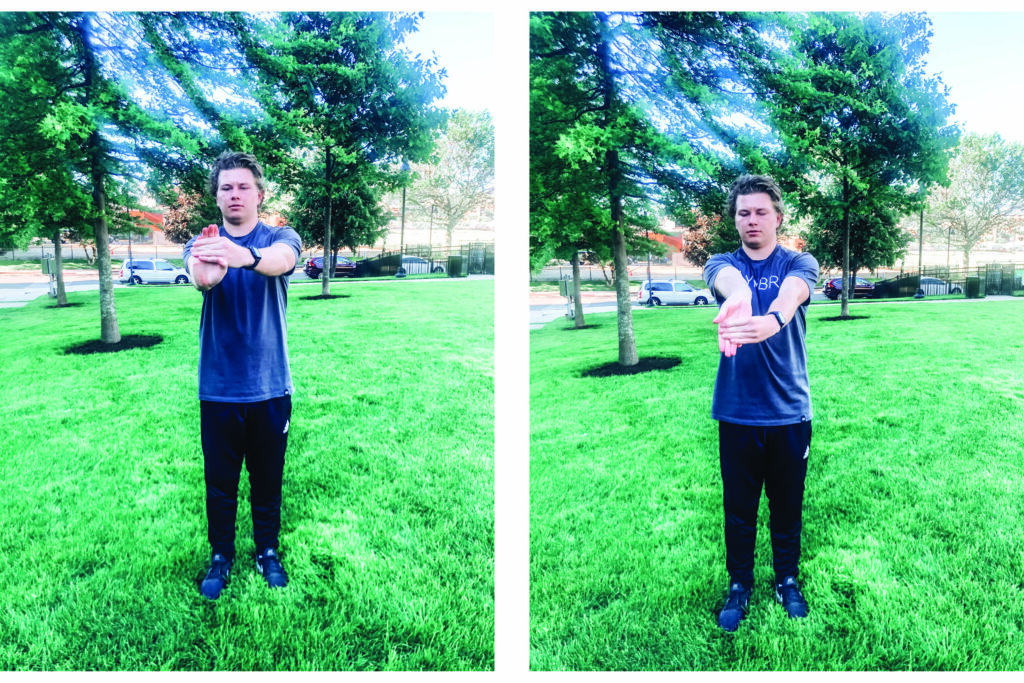
Wrist flexors pronated (left image) – While standing, extend one arm out in front of you at a 90-degree angle with your palm pointing down and your elbow crease angled toward your body. With your fingers out straight, gently point them up to the ceiling along with your wrist and use your opposite hand to assist. Make sure the pressure of your assisting hand is closer to your wrist than your fingers as it will be less sensitive and target the forearm muscles more specifically. Move through the stretch for 2-3 seconds and relax. Do 3-5 reps on one side and repeat on the other side. Perform 1-3 sets on each side. Note: This stretch will target the belly of the wrist flexor muscles.
Wrist flexors supinated (image right) – While standing, extend one arm out in front of you at a 90-degree angle with your palm pointing up and your elbow crease angled straight up. With your fingers out straight, gently point them down to the floor with your wrist and use your opposite hand to assist. Make sure the pressure of your assisting hand is closer to your wrist than your fingers as it will be less sensitive and target the forearm muscles more specifically. Move through the stretch for 2-3 seconds and relax. Do 3-5 reps on one side and repeat on the other side. Perform 1-3 sets on each side. Note: This stretch will target the distal wrist flexor muscles.
WRIST PRONATORS
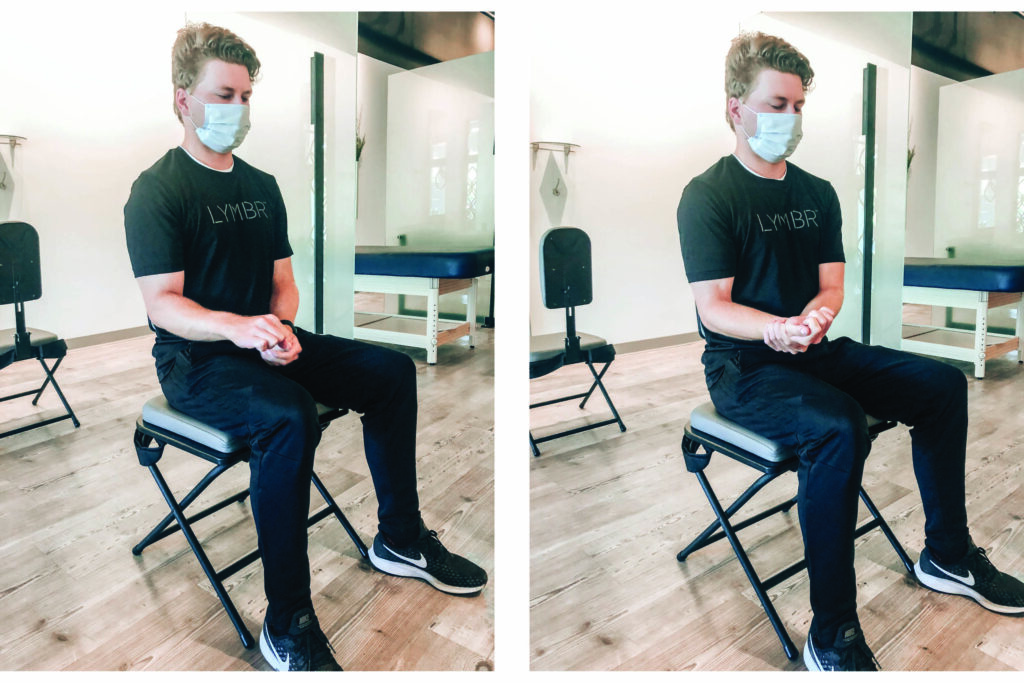
Wrist pronators – Starting with your arm bent at 90 degrees by your side and wrist in a fully pronated position (palm down), turn your wrist away from you so that your palm is pointing directly up. Use your other hand to assist. Do not move your shoulder to help get further, isolating the forearm movement is critical to the effectiveness of the stretch. Move through the stretch for 2-3 seconds and relax. Do 3-5 reps on one side and repeat on the other side. Perform 1-3 sets on each side.
WRIST SUPINATORS
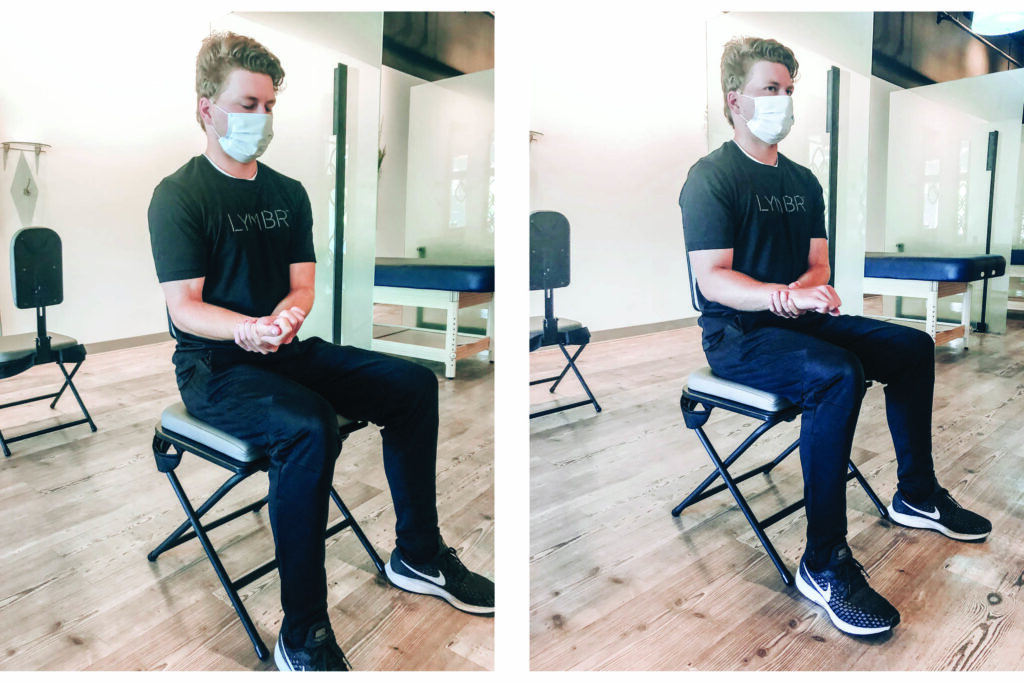
Wrist supinators – Starting with your arm bent at 90 degrees by your side and wrist in a fully supinated position (palm up), turn your wrist toward you so that the back of your hand is pointing directly up. Use your other hand to assist. Do not move your shoulder to help get further, isolating the forearm movement is critical to the effectiveness of the stretch. Move through the stretch for 2-3 seconds and relax. Do 3-5 reps on one side and repeat on the other side. Perform 1-3 sets on each side.
FINGER FLEXORS
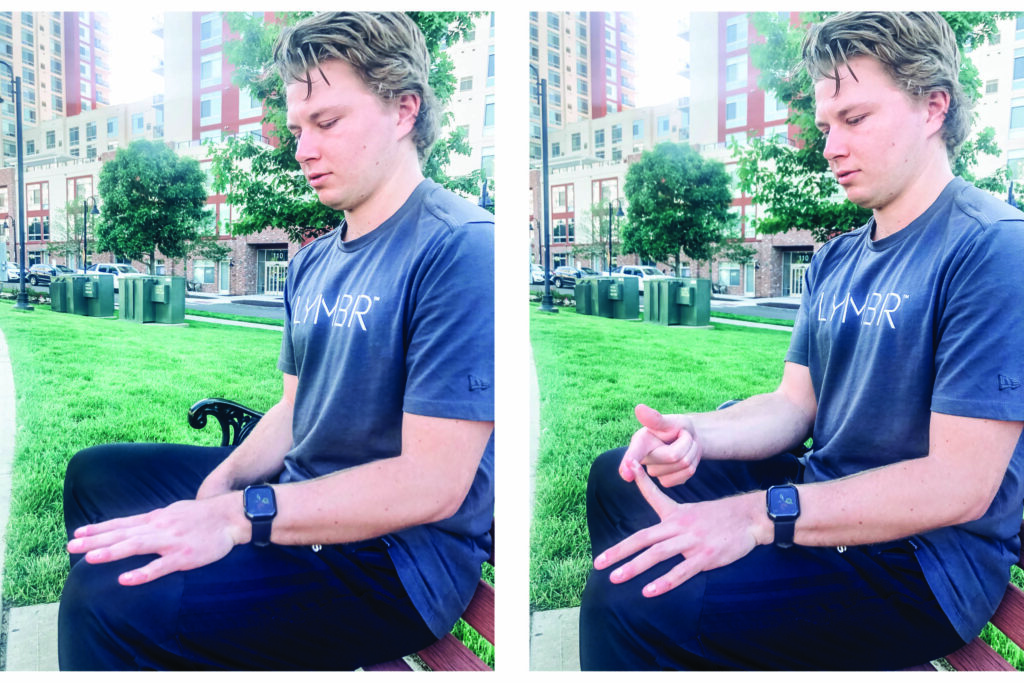
Finger flexors – this stretch is simple, but a few tips and tricks go a long way. Rest your hand on your thigh with your arm bent at 90 degrees. Gently starting with your index finger lift it up and use your other hand to assist very softly. The muscle fibers in the fingers are very sensitive so you do not need to feel this stretch to much in order to get results. Move through the stretch for 2-3 seconds and relax. Do 3-5 reps on one side and repeat on each finger. Perform 1-3 sets on each hand.
BEING PROACTIVE IS KEY
These stretches on your own will not be as effective without the help of a LYMBR therapist. But the more you do these on your own, the more progress we will be able to make in the studio. It is important to be proactive about the health of your body, particularly as a tennis player, since overuse injuries are so common. Always take control of your body and do everything you can to prevent injuries before they occur, rather than reacting to injuries that have already happened.
